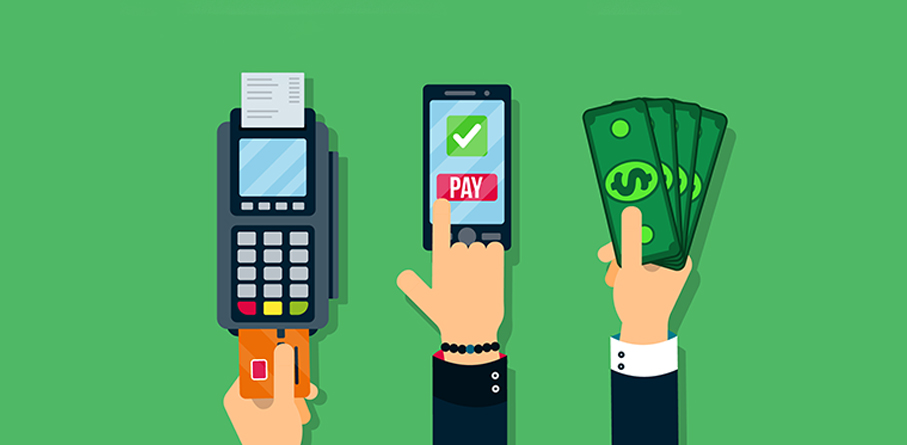There is a symbiotic relationship between payment methods and economic activity: the evolution of means of payment has historically favoured economic development, and similarly, the evolution of economic activity has led to the modernisation of means of payment.
Cash is the most popular means of payment worldwide, used in 85% of all transactions. However, despite the overwhelming prevalence of cash as a payment method, it is slowly declining. And that 15% of non-cash transactions (9.1% credit/debit cards and 4.6% direct debits/bank transfers) is where a disruption is now occurring which will affect the entire means of payment system.
Despite these data, we must not forget the substantial differences in payment methods seen in different world regions. For example, in Latin America 61% of the population are outside the banking system, so cash is used as means of payment in 95% of transactions (99% in Peru, 98% in Colombia and 96% in Mexico), except for Brazil, where only 15% of transactions take place in cash, and the number of card operations doubled from 2009 to 2013. The fastest-growing channel is credit and debit cards, which represent 81% of non-cash payments.
In Spain most transactions are paid in cash (84%), and the others are equally split between cards and bank transfers. In credit and debit cards, the number of transactions per inhabitant per year (52) is far from the European Union average (79), and even further from northern Europe (200).
Analysis of trends in payment methods
The growth of new payment methods, added to the traditional options, makes it harder for users to distinguish between technologies, products, applications and systems. It is hoped that there will be convergence and standardisation, depending on users’ needs and expectations, and on the capacity of companies in the sector to create shared solutions. This convergence process is influenced by:
1) Global trends: The internet and digital technology increase consumers’ influence and decision-making power:
- Mobility: In 2017 the number of SIM cards in the world (7.8 billion) exceeded the population of the planet (7.6 billion), according to the Mobile Economy report by the GSMA, the Mobile World Congress organiser.
- Social networks: For example, in January 2018 Facebook had over 2.167 billion users, more than the combined population of China and India.
- Big Data is already generating business worth over 40 billion dollars a year.
- Cloud Computing is making the traditional technological architecture cheaper and gives more flexibility in the use of information.
- Wearable technology has broken into payment methods with NFC wristbands which can make payments on point of sale terminals in the same way as contactless cards.
- The Internet of Things (IoT) makes the payment experience easier, for example, identifying the products customers are carrying and charging them automatically as they leave.
2) Sector-specific trends: Users use their mobile phones for everything (social networks, internet, etc.) and increasingly as a means of payment in bricks-and-mortar shops, e-commerce and between individuals.
3) Technological trends
- Wireless technologies
– NFC (Near Field Communication): This technology, launched in 2003, uses short-range waves to connect devices. It is generally used for virtual wallets which store information on payment cards, bank accounts and other personal financial tools, enabling users to make virtual payments.
– BLE (Bluetooth Low Energy). Developed by Nokia in 2006, this technology is especially suitable for proximity marketing, sending offers when customers are nearby, or alerting sales staff to their presence. Commercial establishments take the initiative in these communications, unlike NFC, where it is the customer who decides when to interact.
- Mobile security technologies
HCE (Host Card Emulation) and secure element. These technologies are competing in the security market for mobile phone payments. HCE technology (released by Google in 2013) adds security through software, while secure element does it through specific hardware included in phone SIM cards.
- Other technologies
– Blockchain: Technology supporting the virtual currency Bitcoin.
– QR codes (Quick Response): Two-dimensional images which let devices save readable information.
– Batteries: a question mark in wearable devices is whether the space and performance issues of batteries will be resolved. Attempts to improve them include increased capacity, performance, and lifespan, ultra-fast charging, and lower prices.
What would be the ideal means of payment?
Specialists agree that a new payment method would triumph in the market if it was universal and versatile; usable in all physical and virtual establishments; secure (based on technologies like biometrics and tokenisation); practical and simple, getting rid of complicated passwords; cheap, backed by the leading banks; and with a good user experience.
While cash continues to be the world’s most popular means of payment, used in 85% of transactions, it is that other 15% that is fomenting a revolution which will soon bring a complete transformation of the payment method ecosystem. As the many factors and trends evolve over time, we will be able to see which technologies will be at the apex of that ecosystem.


